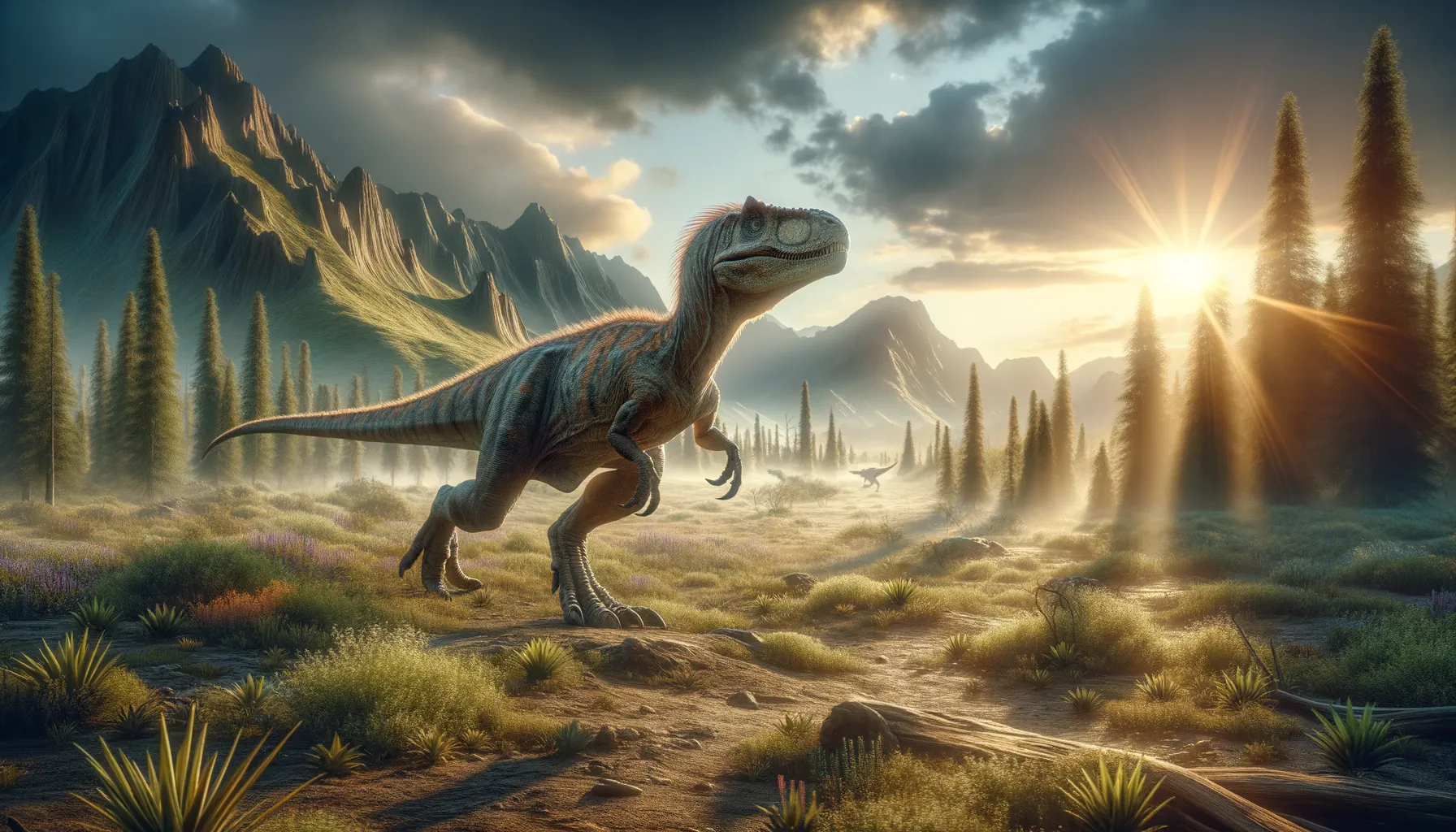
Sanjuansaurus
A Triassic predator on two legs.
Period
Triassic
Length
Around 3 meters long from head to tail.
Height
Approximately 1.5 meters tall at the hip.
Weight
Roughly 30 to 50 kilograms.
Sanjuansaurus was a small to medium-sized theropod dinosaur that roamed the Earth during the Late Triassic period. Its fossil remains were discovered in present-day Argentina, providing critical insights into the diversity of early dinosaurs. With a bipedal stance, it was well-adapted to an active predatory lifestyle. Its discovery has helped paleontologists understand the evolutionary timeline leading to the dominance of theropods.
Diet
Sanjuansaurus was a carnivore, preying on small animals and possibly scavenging. Its teeth were adapted for slicing through meat, indicating an active predatory role.
Hunting
It likely used its moderate speed and agility to ambush small prey. Sanjuansaurus may have hunted alone, stalking its targets before a swift attack.
Environmental challenges
During its time, the Sanjuansaurus faced rapidly changing environments due to shifting climates. It competed with other early theropods and reptiles for food resources. Periodic droughts and volcanic activity would have created additional pressures, shaping its evolutionary path.
Speed
Moderate runner, could likely reach up to 20 km/h.
Lifespan
Estimated to live up to 15-20 years.
First discovery
Discovered in Argentina in 1994.
Fun Facts
- Sanjuansaurus lived during the Late Triassic period, around 231 million years ago.
- This dinosaur was discovered in the Ischigualasto Formation in Argentina.
- Sanjuansaurus was a bipedal dinosaur, meaning it walked on two legs.
- It was about the size of a large dog, roughly 1.5 to 2 meters long.
- Despite being an early theropod, Sanjuansaurus was likely a carnivore.
- The name Sanjuansaurus means 'San Juan lizard', named after the San Juan Province where it was found.
Growth and Development
Sanjuansaurus hatchlings were relatively small and had to quickly grow to avoid predators. Juveniles relied on rapid growth to reach a size where they could fend for themselves. They underwent significant changes in body proportion as they matured, slowly developing the physical traits of adults.
Habitat
Its habitat was likely composed of forested areas and open landscapes in what is now South America. The environment provided an abundance of small vertebrates, insects, and possibly small plant materials. These conditions offered both opportunities and threats, with large predators roaming the same areas.
Interaction with other species
Sanjuansaurus interacted with a variety of other early theropods and reptiles, sometimes competing with them for resources. Its presence in a diverse ecosystem suggests it may have had to adapt to coexist. Predator-prey dynamics likely involved numerous strategies to capture food and avoid being hunted.
Natural lifespan
Sanjuansaurus might have lived up to 15-20 years naturally.
Reproduction
Reproduction likely involved laying eggs, with nests possibly placed in secluded areas. Parental care is speculative, but some theropods showed signs of guarding nests.
Social behaviour
Sanjuansaurus was likely a solitary hunter, though it's possible small group dynamics existed for specific purposes. When encountering others of its kind, behaviors could include vocalizations or display postures to establish dominance or territory.
Fossil locations
Fossils of Sanjuansaurus have been mainly found in the Ischigualasto Formation in Argentina. This site is known for its rich deposits of Late Triassic vertebrates, providing crucial insights into early dinosaur life. The location has been pivotal for understanding the distribution and evolution of dinosaurs.
